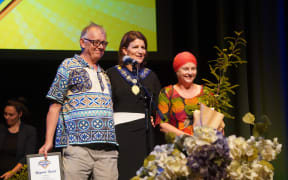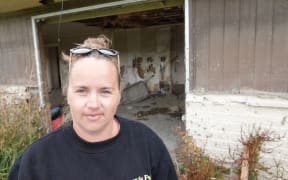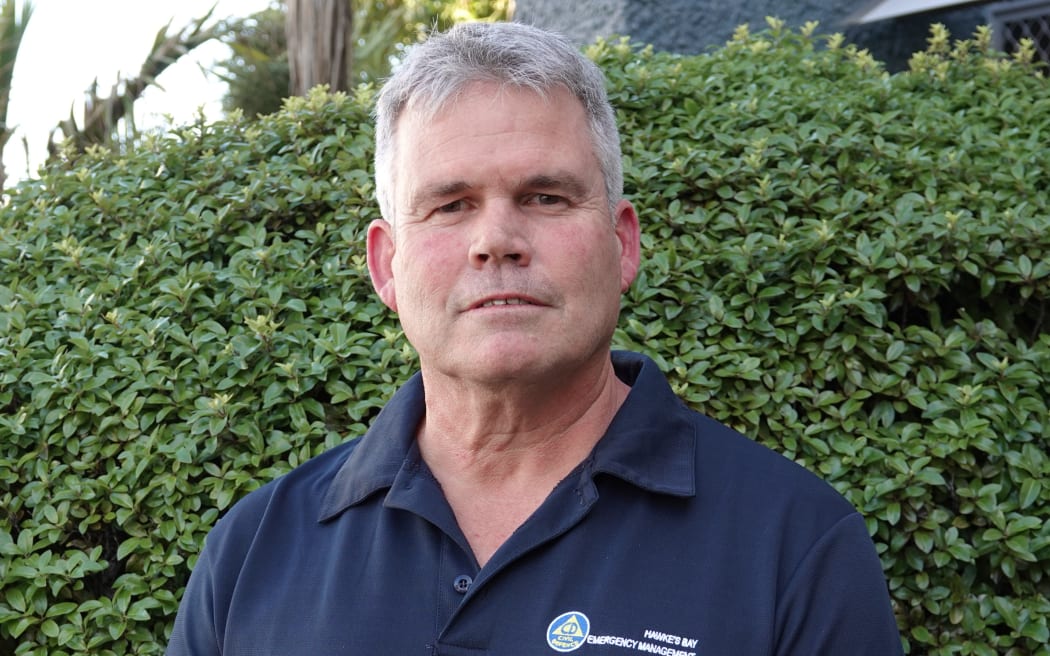
Ian Macdonald says after seeing the beautiful and productive Hawke's Bay region devastated in a matter of hours he knew they would be dealing with the cyclone's effects for years to come. Photo: RNZ / Lauren Crimp
When Cyclone Gabrielle smashed through Hawke's Bay, civil defence controller Ian Macdonald was stranded in the South Island after a tramping trip. He arrived to chaos at Queenstown airport on Tuesday 14 February, with all North Island flights cancelled. There was no word from his family.
After a lengthy journey home - including a stint at the national Emergency Coordination Centre in the Beehive's basement - Macdonald readied himself for what would be the biggest emergency response of his career, involving 1600 people over two and a half months.
A year on from the disaster, he sat down with Hawke's Bay reporter Lauren Crimp to describe that first chaotic week.
*This interview has been edited for brevity. Some topics were off the table, due to the ongoing inquiry into the emergency response in Hawke's Bay.
Describe your first glimpse of Hawke's Bay.
When we flew in, it was a lovely day and you could see the water - but obviously, you couldn't see the detail of the damage and what had happened.
On the drive home [in Napier] there were people queued up at service stations and supermarkets, and it was a little bit surreal from that perspective. I've spent close to 30 years in the Army Reserve and I've been overseas in the Middle East on operations and that's the sort of thing that you see overseas. You don't see it in New Zealand.
I got home and I finally managed to make contact with my family. My daughters ran out onto the road and gave me a big hug. Then I laid my pack down and said 'right, I need to go back to work'.
But the drive from Napier to Hastings, that's when I sort of started to see, you know, the cars that were on the side of the road flooded out, the metres of silt. The bridge that I drive over to go to work every day, the vegetation and slash that was piled up onto that bridge which is many metres above above the water. The Tūtaekurī river was angry. And there were containers floating down, and apple boxes, and all this debris coming down the river.

Damaged vehicles, broken powerlines and piles of silt line State Highway 5 in Esk Valley, after Cyclone Gabrielle. Photo: RNZ / Jemima Huston
What was it like walking into the Emergency Operations Centre for the first time?
I actually had to think about that as I was driving. What am I walking into? When I arrived, I started walking across the car park, and one of my staff members saw me and just said, 'oh, thank God, you're here'.
I didn't know what that meant when I got through the door. But I was actually really, pleasantly surprised. Sure, it was chaotic. Sure, the situation was changing consistently. But everybody was calm. There was no shouting or yelling or hands in the air, sort of thing. People were very clear as to what the direction was that they were working to, the priorities.
The planning was well advanced in terms of that initial welfare response in particular. I was really quite heartened in many ways, to arrive and and see that.
There was a whole range of people that just turned up to help that had the skill sets that we needed to coordinate the response.
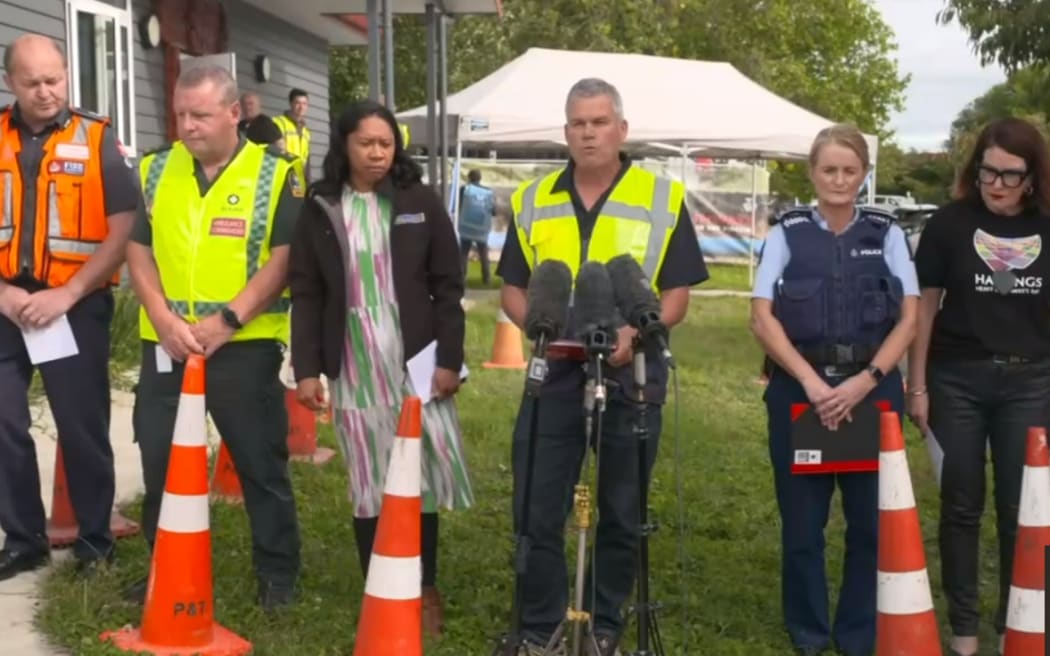
Ian Macdonald at a Civil Defence briefing in Hastings on 16 February 2023. Photo: RNZ
What were the hardest parts to deal with, especially in those first few days, or that first week?
You're in a centre in Hastings. You don't quite understand, you haven't seen everything that's happened outside. I think within a couple of days I managed to get out on a helicopter on one of the supply runs out to one of the more remote communities, jumped off and spoke to the people there, got a feel for what was happening. And then I went up to Wairoa on another helicopter and saw the extent of the damage right across Hawke's Bay.
I've lived here for almost 30 years and seeing this beautiful and productive region absolutely devastated in the space of like, a few hours almost. I could just recognise that was just gonna be huge and we were gonna be dealing with this for years.
I think the other one was around that impact on people actually in the response and seeing their well-being being affected by it. Everybody who came into that response gave it 100 percent. It's like that old rugby analogy, nothing was taken from the field. Everybody gave it their all. But for some people that affected them. I found that quite difficult to deal with, because they were trying to do their best. Everybody was trying to do their best.
And I think just the whole understanding of the depth and breadth of this event, once you sort of got to understand that and the damage that it had caused, and the harm that it had caused to people, that had a quite an impact on on me personally.
What were the best parts of the experience, if we can say that? Obviously you're dealing with a tragedy, but were there any silver linings in the response?
I think that total commitment of those people that were involved. Also the community support for the response. We had two elderly women who came in and every day they cleaned the kitchen, set up the food, and that actually left a pretty lasting impact on me.
They didn't have to be there. But they said that they wanted to come and play their part. And that was their way of doing it.
But also from an operational perspective, one highlight for me was the regional distribution hub. We decided on the Wednesday afternoon that we needed to move from our traditional model of providing welfare - which is people ring up and tell us their needs - to what we call rapid relief, where we actually have to just go out and deliver things to communities, en masse.
It's the sort of thing you see on TV. That happens in other countries, it doesn't really happen in New Zealand. That's the first time that I'm aware of anyway, so it was untested ground for us.
Two days later it was absolutely humming. There were forklifts, there were helicopters coming and going, trucks arriving, military people running around, volunteers coming in.
That, to me is a is a real highlight that we could make those sorts of things happen, and happen really quickly. It wasn't perfect. It never will be perfect in a disaster, but it got the job done ultimately. People out there in those remote communities very quickly got supplies.
It wasn't cordon bleu cuisine, but people had enough food and water, and they had accommodation and that was the main thing with rapid relief. It is about emergency welfare.
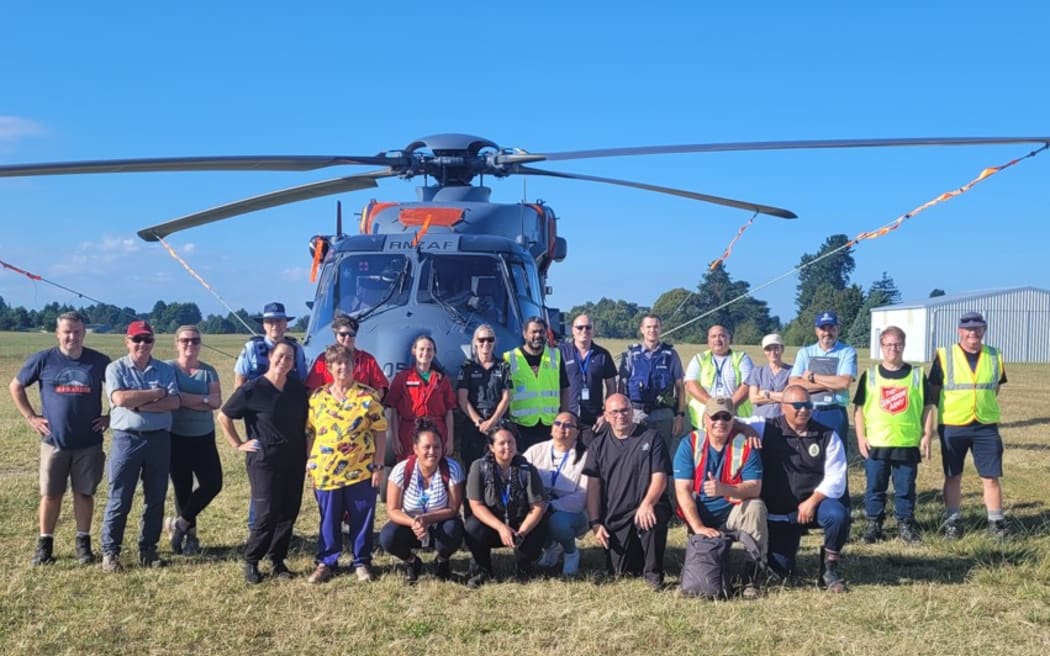
After the cyclone, medical and welfare teams were flown in to run clinics in isolated Hawke's Bay communities. Photo: Hawke's Bay Civil Defence
Was there a time during the response, or since, you just wanted to throw in the towel?
Oh yeah. Most definitely. Not so much during the response because there was a job to be done, but definitely after.
But I'm quite strong on public service, and I suppose that's what's still keeping me in there. I still think there's a lot of work to be done in this space and there's a lot more benefits to be gained and improvements to be made.
Over a period of time you just get a little bit sick of the response bit, and having your phone in your pocket 24/7, and being worried about that phone call in the middle of the night. It is cumulative pressure.
Every time we get a [weather] warning, it just starts to bring back memories. What if? What if this is gonna be a lot worse than what it's forecast? All you can do is reassure people as best you can and trust the science. But it isn't an exact science, and that's part of the problem.
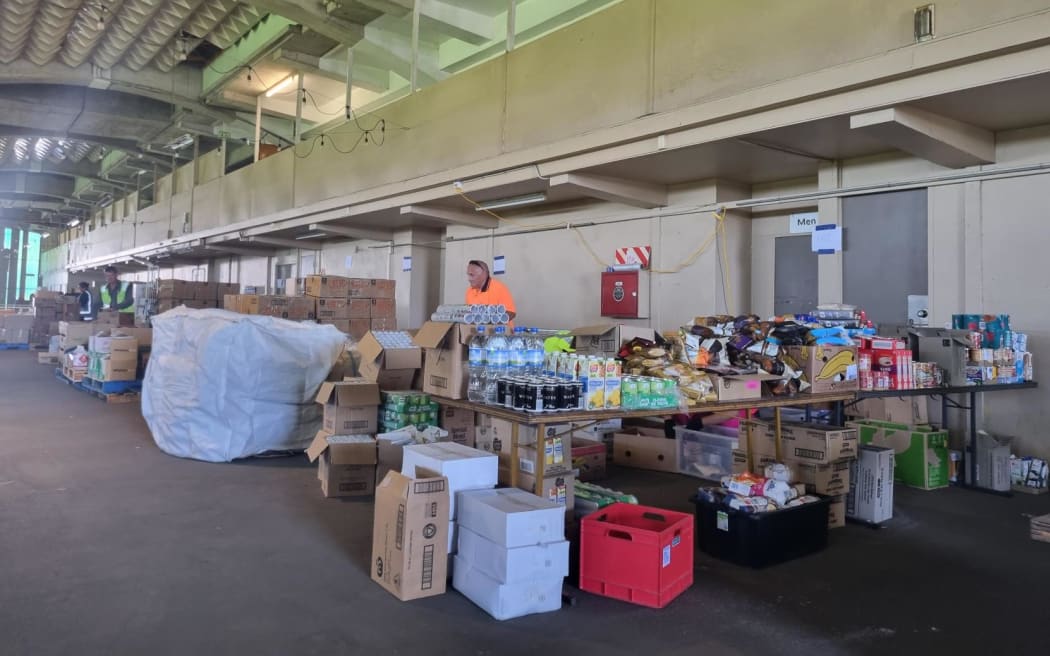
The Hastings' Tomoana Showgrounds was transformed into a regional distribution hub for volunteers, Civil Defence staff, and military personnel to sort through donated clothing, food, and other supplies. Photo: RNZ / Soumya Bhamidipati
On reflection, are you comfortable with your call to go tramping?
Yes, I am comfortable I made that call because that was the Wednesday before the cyclone, and at that stage the cyclone was up in Vanuatu. [Macdonald later added there were no MetService watches or warnings at that time.]
The last three years - Covid lockdowns, the Napier floods and the Nelson-Tasman floods - have been unprecedented for the emergency management sector. So look, everybody needs a break and I hadn't had leave for quite a long time and it was pre-planned leave, a long time ahead.
We have got redundancy within the system. I'm not the only controller here in Hawke's Bay. There were two other controllers who I'd handed over to and who were on duty.
If the system is so bare that it relies on one person, then we've got a problem with the system.

